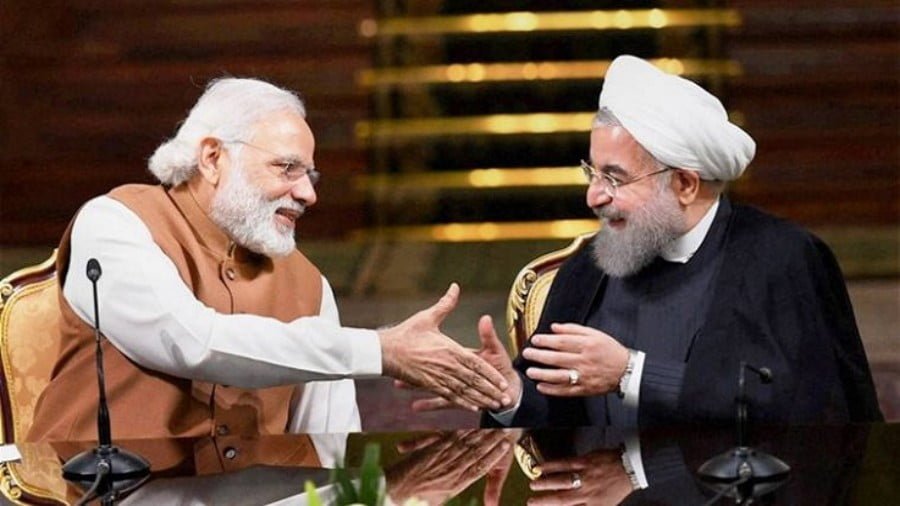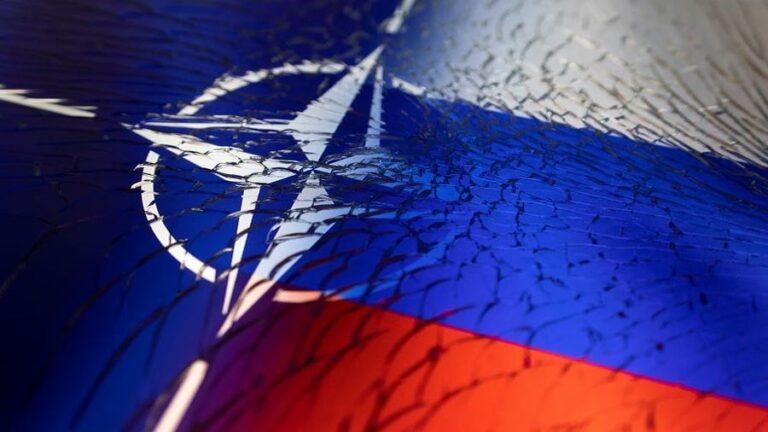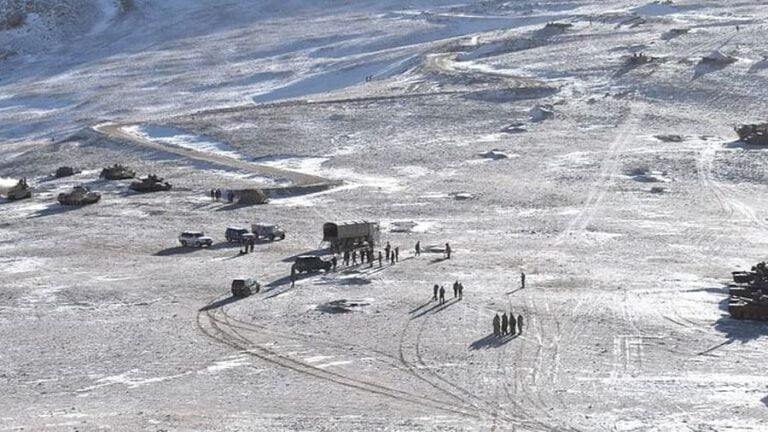The Iranian President’s Visit to India
The Iranian president, Hassan Rouhani, visited India on February 15-17, and talked with the Indian Prime Minister, Narendra Modi. The visit is noteworthy for a number of reasons, the most important of which is the fact that it took place at all.
For it was a significant foreign policy initiative, taken by one of the two ‘pariah states’ which, along with ‘revisionist states’ were seen, until recently, as the source of the main national security threats facing the ‘leading global superpower’.
Iran’s leadership was not intimidated by that attitude, or pressurized into keeping a low profile. In fact, Iran has achieved something very significant, and not just anywhere, but in a country that the ‘global leader’ considers to be almost an ally in its rivalry with China, one of the two ‘revisionist states’.
The key word being ‘almost’: while India’s government has clearly, and quite understandably, sought to develop its strategic relationship with Washington, it has not accepted any enforceable obligations that would tie it to America. At least, not yet. India has therefore never completely broken off its relations (although they were ‘frozen’ for a while) either with Iran or with the other ‘pariah state’ named by the USA- North Korea.
It can be confidently stated that, however mutual relations between the USA, China and India develop, India will not break off its relations with Iran. That is despite the fact that, just four or five years ago, Washington’s threats were a barrier to any improvement in those relations.
Similar threats were heard when Narendra Modi announced that he would travel to Teheran in 2016, (a visit which Hassan Rouhani returned when he travelled to India this month). The then US Assistant Secretary of State for South and Central Asian Affairs, Nisha Desai Biswal, said that the USA had been ‘very clear with the Indians (about) continuing restrictions on activities with respect to Iran.
But the leadership of the right-wing Bharatiya Janata Party, headed by Narendra Modi, was already aware of its status on the international stage. It therefore ignored the new warning from Washington, and the Indian premier, who was visiting Teheran at the time, signed an agreement that was highly important for both parties and which turned out to be an important move in the political game being played out in the Indian and Pacific Ocean regions.
In a Memorandum of Understanding India agreed to extend $500,000,000 credit to Iran for the development of the Chabahar port facility, located on the Gulf of Oman, 100 km from Iran’s border with Pakistan. A 600 km section of railway between Chabahar and Zahedan,currently under construction, will link the port facility with Afghanistan’s transport infrastructure. That railway, by the way, is another joint project with India.
India is thus achieving a very important strategic goal: an access route to Afghanistan (starting with a sea crossing from Mumbai to Chabahar) that bypasses Pakistan.
India’s desire for a certain amount of say in relation to the situation in Afghanistan is not solely due to its understandable wish to oppose the partnership of China and Pakistan: it also reflects a widespread sense among India’s political elite that their country is the heir to ‘British India’. If it continues to develop at its current rate, then maybe it is not too far-fetched to imagine that one day India will be able to call itself the ‘heir to the British Empire’- something Britain is very far from being able to do.
In their comments on the Indo-Iranian Chabahar port project, experts often suggest that it may become as important for India as the port of Gwadar (also 100 km away from Iran’s border with Pakistan, but on the Pakistani side) is for China. Construction of that port facility, largely funded by China, has been under way for the past 15-20 years.
As for Afghanistan itself, just as it was 100 or 200 years ago, it is again in the center of a “Great Game’ for control over Central and South Asia- but this time it is not being played by London and Moscow, but by a new group of countries. Finding itself caught in the cross fire of their rivalries, the Kabul government, trying to find its own way in an arena of competing forces, is more or less openly siding with India.
The complex Chabahar port project is therefore particularly important for Kabul, as well. That is why, in May 2016, the president of Afghanistan, Ashraf Ghani, participated in the Trilateral Agreement on the creation of a ‘transit corridor’ linking Chabahar with Afghanistan’s transport infrastructure. That last project was confirmed in a separate article of the India – Iran Joint Statement which was signed in May 2016, during Narendra Modi’s visit to Teheran.
The project will enable Afghanistan to have access to the sea through ‘friendly’ Iran, bypassing Pakistan, a country with which its relations, as Kabul puts it officially, ‘leave much to be desired’.
As for the Joint Statement adopted during Hassan Rouhani’s visit to India, it is noteworthy, like the Joint Statement issued two years ago, because of the reference to the ‘cordial atmosphere’ in which ‘wide-ranging and constructive discussions on bilateral, regional and multilateral issues were held’. The Statement also expresses satisfaction with the progress in various aspects of the cooperation between the two countries which was initiated during Narendra Modi’s visit to Tehran two years ago.
The document also refers to the completion of the first phase of the modernization of Chabahar port in December 2017, the ratification of the above-mentioned Trilateral Agreement by all of its parties, and the completed delivery of ‘the first shipment of Indian wheat’ to Afghanistan through the new infrastructure.
The joint declaration reiterates India’s and Iran’s participation in the creation of an ‘International North- South Transport Corridor’, with its end points in Saint-Petersburg and Mumbai.
The document covers almost all aspects of international relations, but the section on ‘Security and Defense Cooperation’ is particularly noteworthy. It is not long (just three short articles) but it serves to highlight once again the international context in which it appeared, which is conditioned on Iran’s being effectively declared an enemy by India’s main potential ally.
Specifically, it states that ‘both leaders welcomed the growing interaction between their National Security Councils and agreed to enhance regular and institutionalized consultations between them.’
This success in establishing close links with one of the leading countries in the Greater Middle East region is particularly important for India just now, when China is strengthening its position in countries such as Myanmar, Nepal, Sri-Lanka, and the Maldives, not to mention Pakistan.
In their commentaries, Indian experts have highlighted not only the clear benefits that India could obtain from developing its relationship with Iran, but also the hidden challenges it might face. Those challenges are connected with the complexities of the political and economic situation in Iranian society, and also with problems related to the ‘cleavages existing in the Greater Middle East’, a process Iran is directly involved in.
For example, Iran is now on the edge of a direct military conflict with Israel, a country that India has long had mutually beneficial relations with (for example, it has bought state-of-the-art military hardware from Israel). These relations were confirmed during the recent visit of the Israeli Prime Minister, Benjamin Netanyahu, to New Delhi.
One more serious challenge for New Delhi is Iran’s worsening relationship with Saudi Arabia and the USA.
It seems clear, however, that all the possible risks connected with the rapprochement between the two countries are well understood in both New Delhi and Teheran.
The most important thing is that, as we have already stated, those risks should not prevent the leaders of both countries from increasing their cooperation on a broad range of issues, which in turn will become an important element in the complex political puzzle throughout the Indian and Pacific Ocean regions.
By Vladimir Terekhov
Source: New Eastern Outlook







